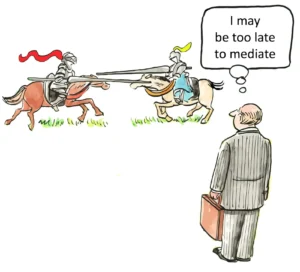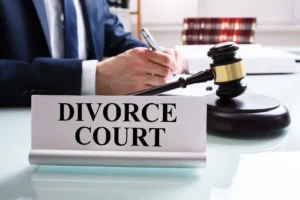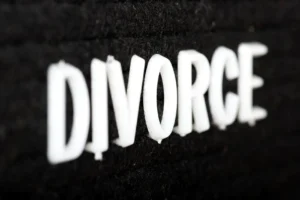Evidence in Personal Injury Cases: Essential Legal Framework for American Plaintiffs
Individuals pursuing personal injury claims frequently ask, “What types of evidence will strengthen my case and maximize my compensation?” The answer is that successful personal injury litigation depends on comprehensive evidence collection including medical documentation, eyewitness testimony, expert analysis, and physical proof that establishes both liability and damages. Unlike criminal cases requiring proof beyond reasonable doubt, civil personal injury cases operate under the preponderance of evidence standard, making thorough documentation and strategic evidence presentation crucial for favorable outcomes.
Evidence preservation represents the foundation of effective personal injury representation, requiring immediate action to secure documentation, witness statements, and physical proof before memories fade or crucial information disappears. The legal framework balances constitutional due process rights with practical litigation realities, ensuring that injured parties receive fair opportunities to present their cases while maintaining efficient judicial administration.
What Constitutional Protections Apply to Personal Injury Evidence?
Due process rights under the Fifth and Fourteenth Amendments establish fundamental protections for personal injury plaintiffs seeking compensation through civil litigation, ensuring that evidence collection and presentation occur within constitutional frameworks that protect both plaintiff and defendant rights to fair legal proceedings.
The constitutional framework recognizes that personal injury cases involve property rights to compensation for damages caused by others’ negligence or wrongful conduct. Equal protection principles require that evidence rules apply consistently across similar cases while preventing discriminatory application of evidentiary standards that could disadvantage particular groups or individuals.
Federal Evidence Standards and State Implementation
Federal Rules of Evidence provide the framework for federal court personal injury cases while serving as models for state evidence rules that govern most personal injury litigation. These rules balance the need for relevant, reliable evidence against concerns about prejudice, confusion, and judicial efficiency.
State courts handle the vast majority of personal injury cases under state-specific evidence rules that generally follow federal patterns while reflecting local legal traditions and policy preferences. This decentralized approach allows states to adapt evidence standards to local conditions while maintaining constitutional compliance and basic fairness principles.
Interstate evidence issues arise when personal injury cases involve multiple jurisdictions, requiring careful analysis of which state’s evidence rules apply and how evidence gathered in one state may be presented in another jurisdiction’s courts.
How Do State Laws Create Different Evidentiary Standards?
State variations in evidence rules reflect different policy approaches to balancing comprehensive fact-finding against judicial efficiency and jury comprehension. Some states maintain more restrictive hearsay rules, while others provide broader exceptions that allow more extensive evidence presentation in personal injury cases.
California’s comprehensive Evidence Code provides detailed rules governing medical evidence, expert testimony, and demonstrative evidence that favor thorough case presentation while maintaining reliability standards. This approach contrasts with states that apply more restrictive evidence rules emphasizing judicial efficiency over comprehensive evidence presentation.
Regional Approaches to Evidence Standards
Southern states generally maintain traditional evidence rules that emphasize reliability and judicial efficiency while providing reasonable opportunities for injured parties to present comprehensive cases. States like Texas and Georgia balance evidence accessibility with courtroom management considerations.
Western jurisdictions often feature more liberal evidence rules allowing extensive expert testimony and demonstrative evidence, with states like California providing broad discovery rights and evidence presentation opportunities that support comprehensive case development.
Northeastern states typically maintain sophisticated evidence frameworks with detailed appellate guidance on admissibility standards, creating predictable environments for evidence presentation while ensuring thorough judicial review of evidence decisions.
When Should Personal Injury Attorneys Begin Evidence Collection?
Immediate evidence preservation proves crucial for successful personal injury cases, as physical evidence deteriorates rapidly and witness memories fade over time. Professional legal representation should begin evidence collection within hours or days of injury incidents to maximize evidence availability and quality.
Scene documentation must occur before conditions change, vehicles are repaired, or physical evidence disappears through normal cleanup or reconstruction activities. Delay in evidence collection often results in lost opportunities to gather crucial proof that could determine case outcomes.
Critical Evidence Collection Timeline
Medical evidence documentation should begin immediately with emergency treatment records and continue throughout the treatment process to establish comprehensive medical proof of injury causation, treatment necessity, and long-term prognosis supporting damage claims.
Witness identification and statement collection must occur promptly before witnesses become unavailable or their memories of incident details fade over time. Professional legal representation ensures systematic witness contact and statement preservation using legally appropriate procedures.
Expert witness retention should occur early in case development to ensure availability of qualified professionals and allow adequate time for thorough case analysis and report preparation that supports comprehensive evidence presentation.
What Types of Medical Evidence Strengthen Personal Injury Cases?
Treatment records from emergency rooms, hospitals, and treating physicians provide foundational evidence of injury severity, treatment necessity, and medical costs that support damage claims. Comprehensive medical records establish causal relationships between incidents and injuries while documenting treatment progression and outcomes.
Diagnostic testing including X-rays, MRI scans, CT scans, and specialized examinations provides objective evidence of injury severity that supports substantial damage claims while countering defense arguments about subjective pain complaints or exaggerated symptoms.
Specialized Medical Documentation
Expert medical testimony from treating physicians and independent medical experts provides professional opinions about injury causation, treatment appropriateness, and long-term prognosis that support comprehensive damage calculations and settlement negotiations.
Life care planning by qualified medical professionals establishes future medical needs and costs for severely injured plaintiffs, providing detailed projections that support substantial settlements or jury verdicts for catastrophic injury cases.
Functional capacity evaluations provide objective assessments of injury-related limitations and work capacity restrictions that support lost wage claims and disability determinations in personal injury litigation.
How Do Eyewitness Accounts Impact Personal Injury Evidence?
Eyewitness testimony provides crucial evidence about incident circumstances, fault determination, and injury causation that may prove decisive in personal injury cases where liability disputes arise. Professional witness preparation ensures effective testimony presentation while maintaining witness credibility and reliability.
Witness credibility depends on factors including observation opportunity, memory accuracy, and potential bias that require careful legal analysis and preparation to maximize testimonial impact while addressing potential credibility challenges from opposing counsel.
Witness Management and Preparation
Statement preservation through written statements, recorded interviews, and sworn depositions protects witness testimony against memory deterioration and witness unavailability while providing admissible evidence for trial presentation or settlement negotiations.
Expert witness coordination ensures that lay witness testimony complements professional expert opinions while avoiding conflicts or inconsistencies that could undermine overall case presentation and evidence credibility.
Impeachment protection requires thorough witness preparation and background investigation to identify potential credibility issues before trial while developing strategies to address witness limitations or biases that may affect testimony impact.
What Role Does Physical Evidence Play in Personal Injury Litigation?
Accident scene evidence including vehicle damage, road conditions, and environmental factors provides objective proof of incident circumstances that supports liability arguments and damage calculations. Physical evidence often proves more compelling to juries than witness testimony alone.
Product defect evidence in cases involving defective products, medical devices, or dangerous premises requires specialized collection and preservation techniques to maintain chain of custody and ensure admissibility in court proceedings.
Physical Evidence Documentation
Photographic evidence provides permanent visual records of accident scenes, injuries, and property damage that support case presentation while ensuring evidence preservation regardless of subsequent changes to physical conditions.
Engineering analysis of physical evidence may require expert examination to determine failure mechanisms, design defects, or maintenance issues that contributed to injury-causing incidents and support liability arguments.
Chain of custody procedures ensure that physical evidence maintains integrity and admissibility from collection through trial presentation, requiring proper documentation and handling procedures that meet legal standards for evidence authentication.
How Do Expert Witnesses Enhance Personal Injury Evidence Presentation?
Medical experts provide professional opinions about injury causation, treatment appropriateness, and long-term prognosis that translate complex medical information into understandable terms for judges and juries while supporting substantial damage claims.
Economic experts calculate lost earnings, future medical costs, and life care expenses that provide professional foundations for comprehensive damage claims while accounting for inflation, career progression, and other economic factors affecting long-term compensation needs.
Specialized Expert Testimony
Accident reconstruction specialists provide scientific analysis of incident circumstances that support liability arguments while presenting complex technical information in accessible formats that help judges and juries understand case facts.
Safety experts in premises liability and product defect cases provide professional opinions about industry standards, safety violations, and preventable hazards that support negligence claims while demonstrating how proper safety measures could have prevented injuries.
Vocational rehabilitation experts assess injury impacts on earning capacity and career prospects while identifying retraining opportunities that may affect damage calculations and settlement negotiations.
What Documentary Evidence Supports Personal Injury Claims?
Financial records including wage statements, tax returns, and employment documentation establish earning capacity and economic losses that support lost wage claims and future earning capacity calculations in personal injury cases.
Insurance policies and coverage documentation may reveal additional compensation sources while establishing policy limits and coverage terms that affect settlement strategies and damage recovery potential.
Business and Employment Records
Employment files containing job descriptions, performance evaluations, and career advancement records support earning capacity claims while demonstrating injury impacts on career prospects and professional development opportunities.
Business records in commercial settings may provide evidence of safety violations, maintenance issues, or policy failures that contributed to injury-causing incidents and support negligence claims against business defendants.
Government inspection reports and regulatory compliance records may reveal safety violations or maintenance deficiencies that support liability arguments while demonstrating defendants’ knowledge of hazardous conditions.
How Does Technology Enhance Modern Evidence Collection?
Digital photography and video documentation provide high-quality visual evidence that captures injury progression, accident scenes, and physical evidence with greater detail and accuracy than traditional photography methods.
GPS data from smartphones and vehicle systems may provide objective evidence about accident locations, speeds, and timing that supports or contradicts witness accounts and liability arguments in personal injury cases.
Advanced Technology Applications
3D modeling and virtual reality reconstructions help juries understand complex accident scenarios while providing compelling visual presentations that demonstrate injury mechanisms and liability factors more effectively than traditional evidence presentation.
Electronic medical records provide comprehensive treatment documentation while ensuring complete medical record preservation and easy access for case development and trial preparation purposes.
Social media evidence may support or undermine personal injury claims depending on content, requiring careful analysis to determine whether social media activity contradicts claimed injuries or limitations.
What Surveillance and Investigation Evidence May Affect Personal Injury Cases?
Surveillance footage from security cameras, traffic cameras, and dashcam recordings provides objective evidence of incident circumstances that may prove crucial for liability determination and damage assessment in personal injury litigation.
Private investigation services may uncover additional evidence, locate witnesses, or document conditions that support personal injury claims while ensuring professional evidence collection that meets legal admissibility standards.
Surveillance Challenges and Opportunities
Defense surveillance of injury claimants represents common insurance company tactics that require awareness and appropriate response to prevent legitimate claims from being undermined by misrepresented surveillance evidence.
Counter-surveillance strategies protect injury claimants from harassment while ensuring that legitimate activities don’t provide ammunition for defense arguments about injury exaggeration or fraudulent claims.
Video analysis of surveillance footage may require expert enhancement or interpretation to identify crucial details that support case arguments while ensuring proper authentication and chain of custody for admissibility purposes.
How Do Medical Records and Healthcare Documentation Support Injury Claims?
Complete medical histories provide context for current injuries while distinguishing between pre-existing conditions and injury-related medical problems that support damage claims and causation arguments in personal injury litigation.
Treatment chronology documentation demonstrates injury progression and medical response while supporting arguments about treatment necessity and medical costs that justify substantial damage awards.
Healthcare Provider Cooperation
Physician cooperation in providing detailed medical records and expert testimony proves essential for successful personal injury cases, requiring professional relationships and appropriate procedures for obtaining comprehensive medical evidence.
Hospital records including emergency department reports, surgical notes, and nursing documentation provide detailed evidence of injury severity and treatment requirements that support substantial damage claims.
Rehabilitation records from physical therapy, occupational therapy, and other treatment providers document recovery efforts while supporting claims about injury impacts and future medical needs.
What Demonstrative Evidence Techniques Prove Most Effective?
Medical illustrations and anatomical models help juries understand complex injury mechanisms while providing visual explanations that make technical medical information accessible to non-medical decision makers.
Day-in-the-life videos demonstrate injury impacts on daily activities while providing compelling personal evidence that connects legal claims to human consequences that resonate with judges and juries.
Visual Presentation Strategies
Timeline presentations organize complex case facts chronologically while helping judges and juries understand causal relationships between incidents and resulting injuries or complications.
Cost projections using professional charts and graphs present economic damages in understandable formats while supporting substantial settlement demands or jury verdict requests for comprehensive compensation.
Comparison evidence showing before-and-after injury conditions provides powerful visual proof of injury impacts while supporting non-economic damage claims for pain, suffering, and diminished quality of life.
How Do Discovery Rules Affect Personal Injury Evidence Collection?
Discovery procedures provide formal mechanisms for obtaining evidence from opposing parties while ensuring comprehensive fact development that supports thorough case preparation and effective settlement negotiations.
Subpoena powers allow attorneys to obtain records and testimony from non-parties while ensuring access to crucial evidence that may not be voluntarily provided by witnesses or record holders.
Discovery Strategy and Timing
Early discovery efforts provide advantages in evidence preservation while ensuring that crucial information is obtained before memories fade or records are destroyed through routine document retention policies.
Expert discovery coordination ensures that opposing experts receive adequate information while protecting litigation strategy and maintaining competitive advantages in expert witness preparation and presentation.
Electronic discovery procedures address digital evidence including emails, text messages, and electronic records that may provide crucial evidence in contemporary personal injury litigation involving modern communication and documentation methods.
What Evidence Authentication Requirements Apply to Personal Injury Cases?
Chain of custody documentation ensures that physical evidence maintains integrity from collection through trial presentation while meeting legal requirements for evidence authentication and admissibility in court proceedings.
Foundation testimony establishes the authenticity and relevance of documentary evidence while providing proper legal foundations for evidence admission during trial proceedings.
Authentication Challenges and Solutions
Digital evidence authentication requires specialized knowledge of electronic systems and metadata analysis to ensure that digital photographs, recordings, and documents meet legal standards for evidence admissibility.
Business record exceptions to hearsay rules provide pathways for admitting documentary evidence while requiring proper foundational testimony and authentication procedures that meet applicable evidence rule requirements.
Expert authentication may be necessary for complex technical evidence including accident reconstruction reports, medical imaging, and engineering analyses that require specialized knowledge for proper authentication and presentation.
How Do Statute of Limitations Considerations Affect Evidence Strategy?
Evidence preservation becomes urgent as statute of limitations deadlines approach, requiring systematic efforts to secure all available evidence before time limits expire and litigation opportunities are lost permanently.
Discovery cutoffs in litigation require strategic timing of evidence collection and expert witness preparation to ensure comprehensive case development within court-imposed deadlines and procedural requirements.
Time-Sensitive Evidence Issues
Witness availability may decline over time as witnesses relocate, forget details, or become unavailable for testimony, making early evidence collection crucial for preserving witness testimony through depositions or recorded statements.
Physical evidence deterioration requires prompt preservation efforts while accident scenes remain intact and physical evidence maintains integrity for effective presentation and analysis.
Medical evidence development continues throughout treatment periods, requiring ongoing documentation and expert analysis to ensure comprehensive medical proof that supports maximum damage recovery.
What Ethical Considerations Govern Personal Injury Evidence Collection?
Professional responsibility rules govern attorney conduct in evidence collection while ensuring that legitimate advocacy remains within ethical bounds that maintain legal system integrity and public confidence in judicial proceedings.
Client confidentiality protections require careful handling of sensitive medical and personal information while ensuring effective case presentation that protects client privacy interests consistent with litigation requirements.
Evidence Collection Ethics
Witness contact rules prevent improper communication with represented parties while ensuring access to crucial witness testimony through appropriate channels and professional procedures that maintain ethical compliance.
Expert witness relationships require careful management to avoid conflicts of interest while ensuring objective professional opinions that support case arguments without compromising expert credibility or professional integrity.
Discovery compliance obligations require honest disclosure of evidence while protecting legitimate litigation strategy and maintaining competitive advantages within ethical bounds that preserve legal system fairness.
How Do Insurance Company Tactics Affect Evidence Presentation Strategy?
Defense medical examinations represent common insurance company tactics that require strategic preparation and response to ensure that biased medical opinions don’t undermine legitimate injury claims supported by comprehensive medical evidence.
Surveillance activities by insurance companies require awareness and appropriate response while ensuring that legitimate claim activities don’t provide ammunition for defense arguments about injury exaggeration or claim fraud.
Insurance Defense Strategies
Expert witness battles often characterize personal injury litigation as insurance companies retain professionals to minimize damage claims while plaintiff attorneys present expert testimony supporting substantial compensation awards.
Evidence challenges by defense attorneys require thorough preparation and professional presentation to ensure that crucial evidence receives admission while maintaining case strength against aggressive defense tactics.
Settlement leverage depends significantly on evidence quality and presentation readiness, as insurance companies evaluate settlement offers against potential trial outcomes based on evidence strength and presentation capabilities.
What Technology Trends Affect Modern Personal Injury Evidence?
Artificial intelligence applications in medical imaging analysis and accident reconstruction provide new evidence sources while creating challenges for traditional expert testimony and evidence authentication requirements in personal injury litigation.
Smartphone technology creates new evidence sources through GPS tracking, video recording, and communication documentation that may provide crucial evidence in contemporary personal injury cases involving modern technology use.
Emerging Evidence Technologies
Wearable devices including fitness trackers and medical monitors may provide objective evidence about injury impacts and recovery progress while creating new categories of demonstrative evidence for personal injury case presentation.
Telemedicine records from remote medical consultations provide additional medical evidence sources while requiring adaptation of traditional medical record authentication and presentation procedures for digital healthcare documentation.
Blockchain verification may provide enhanced evidence authentication while ensuring tamper-proof documentation that meets evolving legal standards for digital evidence integrity and admissibility.
How Do Damages Categories Affect Evidence Requirements?
Economic damages require comprehensive financial documentation including wage records, tax returns, and expert economic analysis to support lost earnings and medical expense claims that form substantial portions of personal injury recovery.
Non-economic damages for pain and suffering require different evidence approaches including witness testimony, medical opinions, and demonstrative evidence that convey intangible injury impacts to judges and juries.
Damage-Specific Evidence Strategies
Future medical costs require expert medical testimony and life care planning to establish long-term treatment needs and associated expenses that support substantial settlement demands or jury verdict requests.
Lost earning capacity claims require vocational expert testimony and comprehensive employment analysis to establish career impact and income loss projections that support substantial damage awards for injured workers.
Punitive damages in appropriate cases require evidence of defendant misconduct beyond ordinary negligence, demanding different evidence collection and presentation strategies that support enhanced damage awards.
What Role Does Case Theme Development Play in Evidence Strategy?
Narrative coherence in evidence presentation helps judges and juries understand complex case facts while creating compelling stories that connect legal arguments to human consequences that support favorable outcomes.
Evidence organization around central case themes ensures efficient presentation while avoiding confusion that could undermine case effectiveness and damage client interests through poor evidence coordination.
Strategic Evidence Presentation
Chronological presentation of evidence helps establish causal relationships while providing logical organization that supports liability arguments and damage calculations through systematic fact development.
Thematic organization around key issues like liability, causation, and damages provides focused evidence presentation while ensuring comprehensive coverage of all elements necessary for successful case outcomes.
Visual storytelling through demonstrative evidence and multimedia presentations enhances traditional evidence presentation while appealing to contemporary juror expectations and learning preferences in modern litigation environments.
How Do Alternative Dispute Resolution Processes Affect Evidence Strategy?
Mediation preparation requires comprehensive evidence organization while maintaining flexibility for creative resolution approaches that may not mirror traditional trial presentation requirements or formal evidence rules.
Arbitration procedures may involve different evidence rules and presentation formats while requiring adaptation of trial evidence strategies to arbitrator preferences and procedural requirements that differ from court proceedings.
ADR Evidence Considerations
Settlement negotiations benefit from strong evidence preparation while requiring strategic disclosure decisions that balance negotiation effectiveness against potential trial preparation if alternative dispute resolution efforts fail.
Confidentiality protections in mediation and arbitration require careful evidence handling while ensuring that ADR processes don’t compromise trial preparation or evidence presentation if cases proceed to litigation.
Cost-benefit analysis of evidence development must consider ADR likelihood while balancing comprehensive case preparation against resource allocation decisions that affect overall case strategy and client interests.
What Quality Control Standards Apply to Personal Injury Evidence?
Professional standards for evidence collection and presentation require systematic approaches that ensure reliability and admissibility while maintaining ethical compliance and effective advocacy within legal system requirements.
Expert witness vetting procedures help ensure credible professional testimony while avoiding expert witnesses whose credentials or opinions might undermine case presentation or provide advantages to opposing parties.
Evidence Management Systems
Document organization using professional case management systems ensures efficient evidence handling while preventing loss or misorganization of crucial evidence that could affect case outcomes and client interests.
Database management for complex cases requires systematic approaches to evidence cataloging while ensuring easy access and efficient presentation preparation that supports effective advocacy and client representation.
Quality assurance procedures help identify potential evidence problems before trial while ensuring comprehensive case preparation that maximizes chances of favorable outcomes for injured clients.
How Do Federal vs. State Court Systems Affect Evidence Strategy?
Jurisdictional considerations affect evidence rules and presentation procedures while requiring strategic decisions about forum selection that may influence case outcomes through different evidence standards and judicial approaches.
Federal court procedures typically involve more formal evidence requirements while providing predictable application of Federal Rules of Evidence that govern most aspects of evidence presentation in personal injury litigation.
Court System Variations
State court diversity requires understanding local evidence rules and judicial preferences while adapting evidence strategies to local legal cultures and procedural requirements that affect case presentation effectiveness.
Appellate considerations require evidence presentation that creates adequate trial records for potential appeals while ensuring that evidence decisions support favorable outcomes at both trial and appellate levels.
Transfer possibilities between court systems require evidence strategies that remain effective across different jurisdictions while maintaining case strength regardless of procedural variations or judicial preferences.
The constitutional framework surrounding personal injury evidence reflects fundamental American principles about due process, equal protection, and the proper balance between comprehensive fact-finding and efficient judicial administration. Due process requirements ensure fair opportunities for evidence presentation while maintaining orderly court procedures that serve both individual justice and broader legal system effectiveness.
State variations in evidence rules demonstrate federalism principles at work, with different jurisdictions developing approaches that reflect regional legal traditions and policy priorities while maintaining basic constitutional protections. These differences require sophisticated legal understanding when personal injury cases involve multiple jurisdictions or complex procedural considerations.
Modern technology continues expanding evidence sources and presentation capabilities while creating new challenges for traditional evidence authentication and admissibility requirements. Professional legal representation ensures that technological advances benefit injury victims while maintaining compliance with evolving evidence standards and courtroom procedures.
The complexity of contemporary personal injury evidence requires comprehensive legal analysis that encompasses constitutional requirements, state law variations, technological developments, and strategic considerations affecting optimal case outcomes. Professional expertise proves essential for effectively collecting, organizing, and presenting evidence that maximizes compensation while maintaining legal and ethical compliance throughout the litigation process.
Personal injury victims benefit from understanding the crucial role that evidence plays in successful case outcomes and fair compensation recovery. The legal framework supports systematic evidence collection and presentation approaches that serve both individual justice and broader legal system integrity through professional representation that ensures adequate protection of constitutional rights while maximizing recovery potential through comprehensive evidence development and strategic presentation.
Modern personal injury evidence law represents the practical application of constitutional principles adapted to contemporary litigation realities and technological capabilities that serve both individual compensation goals and efficient judicial administration. Understanding these evidence requirements remains essential for successful personal injury representation that achieves fair outcomes while maintaining legal system credibility and public confidence in civil justice mechanisms.
- TorHoerman Law Types of Personal Injury Evidence Guide
- Yosha Law Firm Role of Evidence in Personal Injury Claims
- The Advocates Burden of Proof in Personal Injury Cases
- Goldberg Maloney How to Prove Liability in Personal Injury Cases
- Jenner Law Firm Evidence Needed to Prove Personal Injury Claims
- Brumley Law Firm Role of Evidence in Personal Injury Claims
- Pullano Law Medical Evidence Importance in Personal Injury Cases
- Callahan Law Essential Evidence Items for Personal Injury Claims
- SFLCN Importance of Evidence in Personal Injury Claims













